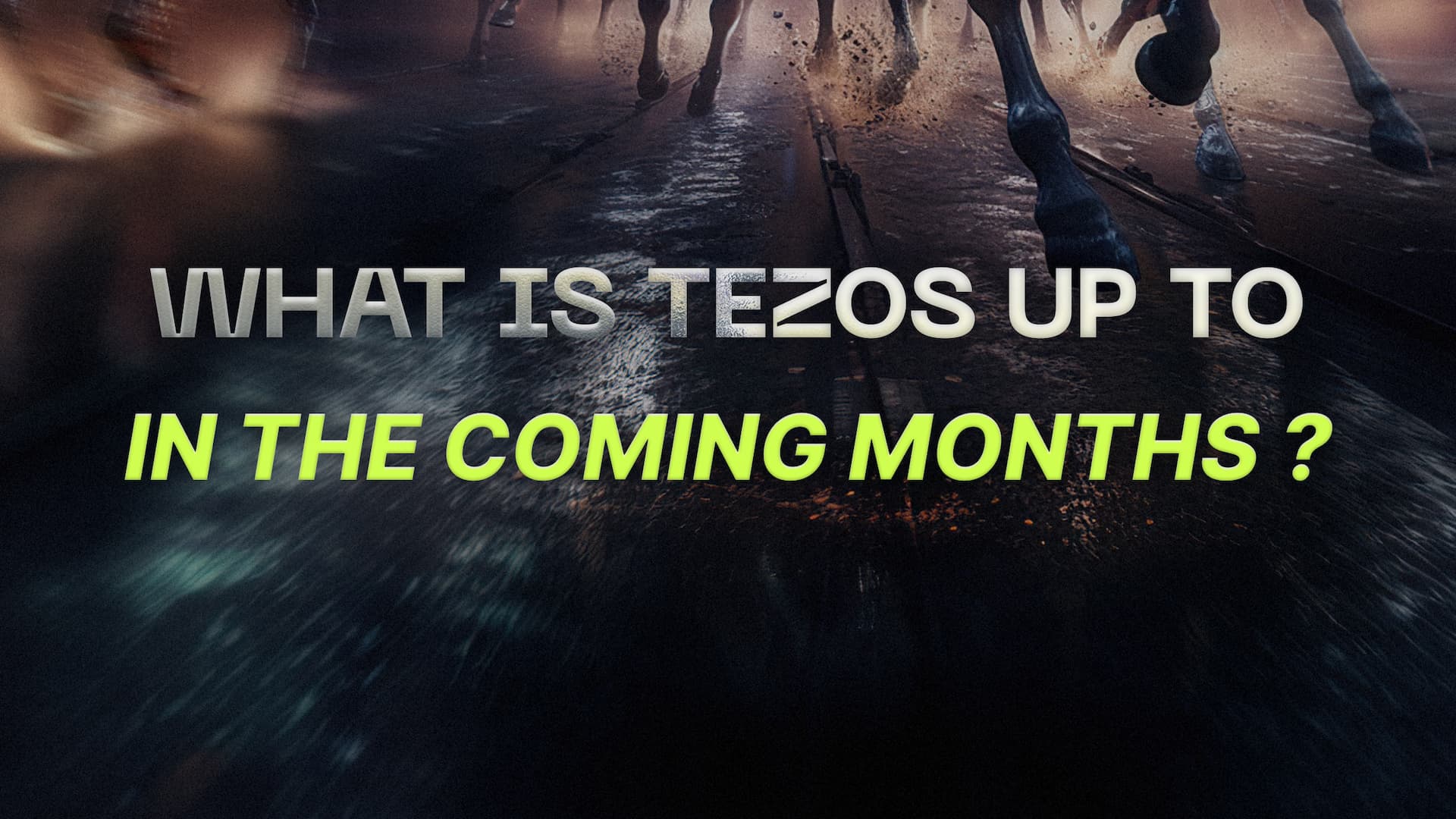In the midst of the Web3 industry buzz, Tezos has experienced a series of notable events and developments since the beginning of the year 2023. From protocol updates to the onboarding of promising new projects, the Tezos ecosystem is in constant evolution. Let's now take a look at what's in store for the end of 2023 on Tezos and how it may concern you, dear Racers!
After Nairobi, the Oxford update
Following the successful deployment of Nairobi on June 24th, Tezos is gearing up for the 15th major update to its ecosystem, named Oxford. This update brings two significant changes to the staking system on Tezos, and it's something you should pay attention to – so buckle up!
It's worth noting that, unlike a traditional automatic deployment, the Oxford update will undergo a vote by the bakers, who can decide whether to adopt the proposal. Here's a summary of the key modifications:
Adaptive inflation: This new approach to XTZ issuance will dynamically adjust XTZ issuance based on various criteria. This will better align the Tezos token economy with the real use case of the blockchain.A new staking mechanism: You're familiar with "bakers" and "delegators," right? Well, Oxford introduces a new role known as a "staker." Don't worry; we'll explain everything in the following sections!As a reminder, bakers are traditional validators as you know them elsewhere. They must lock a minimum of 6,000 XTZ to obtain this status and are rewarded by the protocol for their work. Logically, the more XTZ they have locked, the higher the chance of validating a block and receiving a reward.
On the other hand, delegators don't need to lock the 6,000 XTZ but can entrust the amount they desire to bakers to still contribute to securing the network. The baker decides the percentage they distribute to delegators (usually 80 to 90% of what they earn with the protocol).
📎 Want to learn more about staking on Tezos? Check out our comprehensive guide on how to stake XTZ on Tezos!
Adaptive inflation: a significant upcoming change on Tezos
This proposal originates from a publication titled "Why is adaptive inflation important for Tezos?" written by someone named "murbard" on the Tezos forum. In this publication, the author explores issues related to the current functioning of staking on Tezos. Since the reward rate distributed to stakers is fixed, here's what he explains:
"From a purely economic point of view, there is no difference between a 5% inflation rate that increases everyone's portfolio by 5%, a 5% deflation rate that reduces everyone's portfolio by 5%, or no inflation at all. Tezos uses a fixed inflation rate, but this inflation is nominal. The actual inflation rate is automatically adjusted when bakers decide the share of the reward to be shared with delegators."
If you didn't fully understand, we'll explain! The fact that Tezos distributes a fixed yield to bakers and that they apply the percentage of fees they desire to their delegators currently makes them the real masters of the real inflation rate on XTZ.
Thus, the Oxford proposal introduces that the issuance of XTZ linked to staking rewards will be readjusted at the end of each cycle. The calculation depends on the ratio between the number of XTZ staked and the total quantity in circulation. When this ratio decreases and deviates from the target, the rewards distributed to stakers increase, encouraging participants to stake funds to get closer to the target, and vice versa.
This reduces the impact of XTZ issuance on non-staking holders while providing a relatively attractive return for delegators. For more information, feel free to consult the initial governance proposal.
📎 Now is the time to do your homework: our comprehensive guide on the Tezos blockchain
A new role: "stakers"
If the terms used for participants in Tezos staking seemed complicated, it's not going to get any easier! Indeed, after "bakers" and "delegators," the Tezos blockchain now welcomes a new role: "stakers." Let's break it down for you.
Stakers can contribute to the network's operation by locking XTZ without giving up custody of their funds. Instead of delegating their funds to a "baker," they are frozen in the protocol and also generate rewards. These rewards are calculated proportionally to the weight of the stake in the total balance of their bakers. However, changes to the staker's stake will occur after 5 cycles, while withdrawals will take 7 cycles.
Note that "bakers" may choose not to open their nodes to "stakers." In fact, by default, this option is not activated. Nevertheless, Tezos aims to encourage "stakers" at the expense of "delegators." Thus, staked and delegated funds have different weights in the calculation of governance powers: they simply count twice as much!
🔗 Interested in investing in Tezos? Follow our tutorial to learn how to buy XTZ.
Conclusion: Tezos evolves and adapts constantly
It's worth noting that the Oxford proposal, in its current state, has not yet been voted on. After the proposal by a baker and exploration by other bakers, we are now in the phase of community discovery. This will lead to a final vote among bakers and adoption on Tezos.
Once again, Tezos demonstrates its ability to continually adapt to technological and behavioral changes in its network, thanks to the contribution of an active and involved community.
🔗 Ready to dive into NFTs: What are the best NFT marketplaces on Tezos
Related posts
Discover our other articles

Ambassadors, your VIP experience is around the corner

How to buy Tezos (XTZ) to purchase Stables NFTs?

Transcript: back to AMA with Renaud El Ghozi and Alexis Laporte
Don't miss any news from Stables anymore
Want to find out more about the world of Stables? You've come to the right place.



